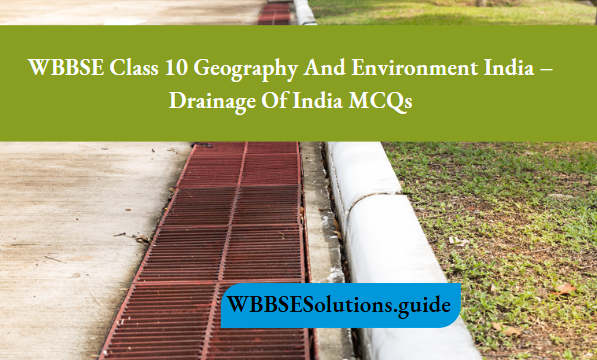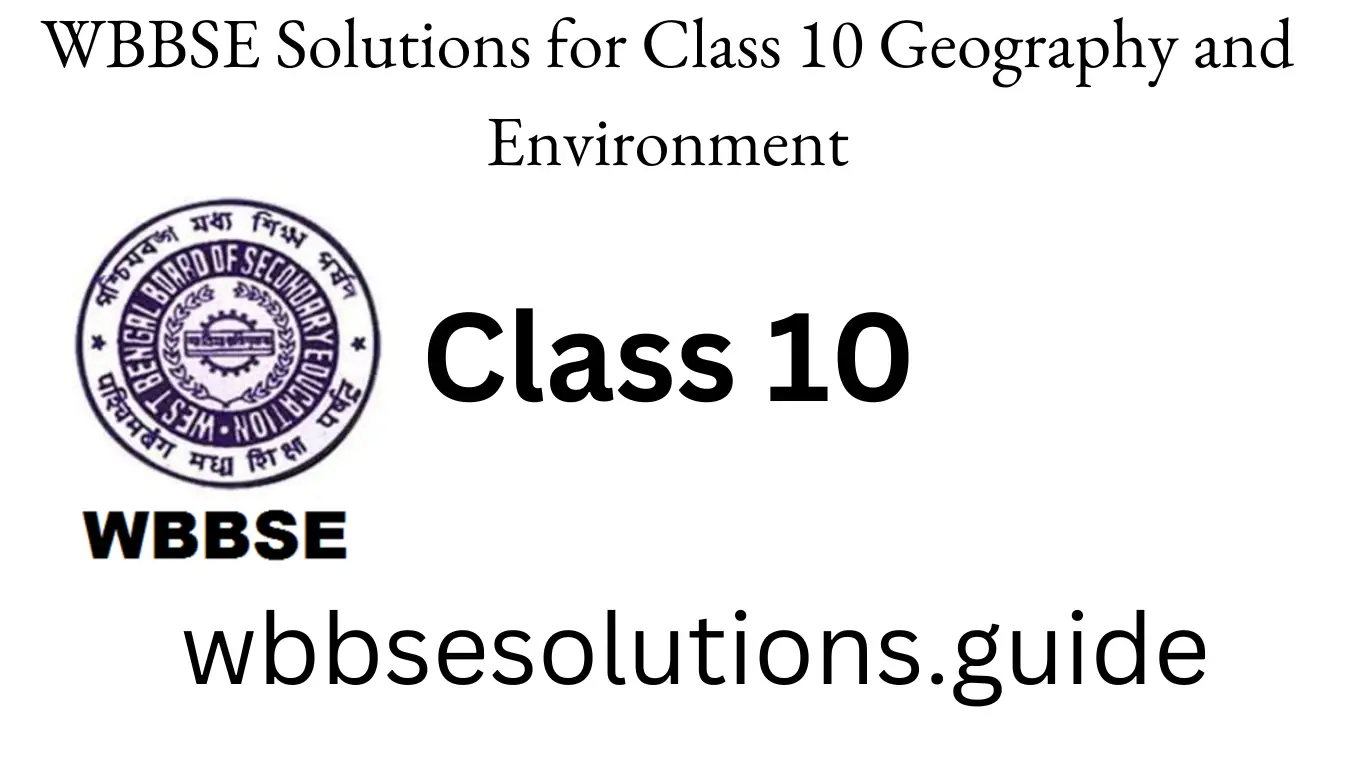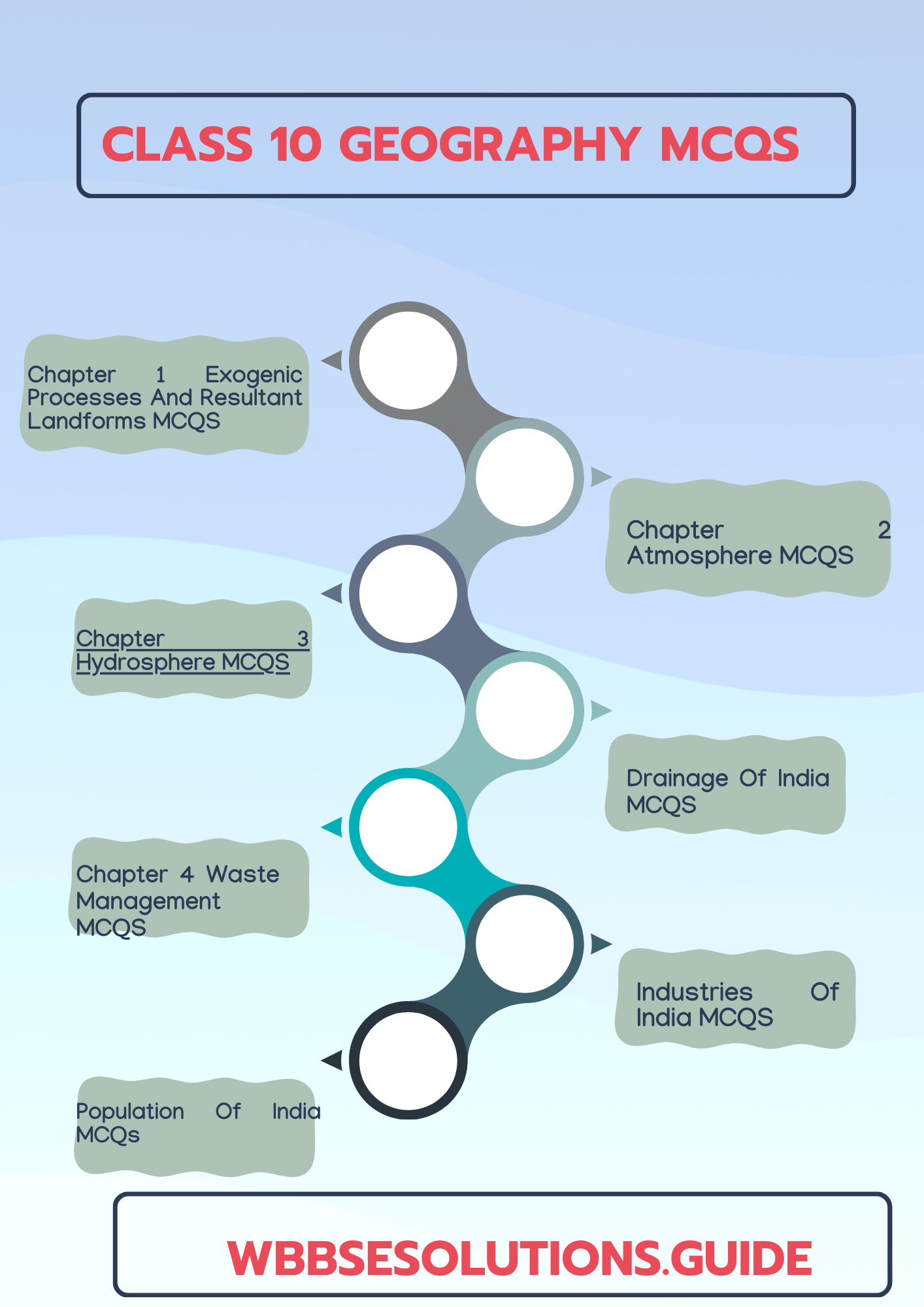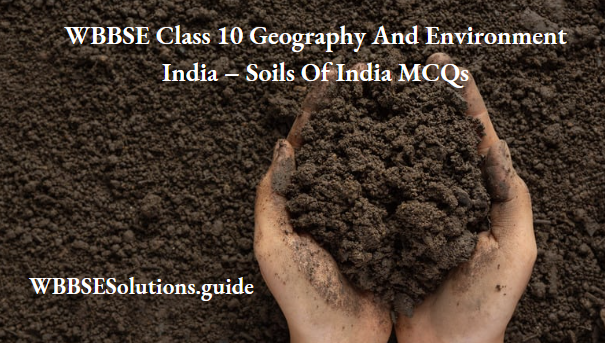WBBSE Class 10 Geography Solution WBBSE India – Drainage Of India MCQs
Question 1. In India, the largest multipurpose river valley project is:
- Bhakra-Nangal
- Damodar
- Rihand
- Hirakud
Answer: 1. Bhakra-Nangal
Question 2. The lake located, in between the deltas of Godavari and Krishna rivers is:
- Kolleru
- Pulicat
- Chilka
- Vembanad
Answer: 1. Kolleru
“WBBSE Class 10 Geography Drainage of India MCQs”
Question 3. The most extensive method of irrigation, practiced in India is:
- Wells and tube wells
- Tanks
- Canals
- Sprinkler
Answer: 1. Wells and tube wells
Question 4. The source of river Ganga is
- Yamunotri Glacier
- Zemu Glacier
- Siachen Glacier
- Gangotri Glacier
Answer: 4. Gangotri Glacier
Read and Learn More WBBSE Class 10 Geography Multiple Choice Question and Answers
Question 5. An example of one salt lake of India is
- Pangong lake
- Bhimtal
- Dai lake
- Loktak Lake
Answer: 1. Pangong lake

Question 6. Ganga has its source in the
- Gangotri
- Baitora Glacier
- Siachen Glacier
- Zemu
Answer: 1. Gangotri
“Class 10 Geography and Environment India Drainage MCQs WBBSE”
Question 7. ______ is the longest glacier of India.
- Siachen
- Baltora
- Gangotri
- Zemu
Answer: 1. Siachen
Question 8. ______ is the highest waterfall in India.
- Jog
- Sivsamudram
- Marble
- Hydro
Answer: 1. Jog
Question 9. ______ is called the Ganga of the South.
- Godavari
- Krishna
- Narmada
- Mahanan
Answer: 1. Godavari
“WBBSE Geography Class 10 Drainage of India multiple choice questions”
Question 10. ______ is the inland drainage of India.
- Luni
- Yamuna
- Ganga
- Narmada
Answer: 1. Luni
Question 11. Delta is the largest in the world.
- Ganga-Brahmaputra
- Nile
- Yangtze-Kiang
- Kosi delta
Answer: 3. Yangtze-Kiang
Question 12. ______ was called the Sorrow of Bengal.
- Damodar
- Narmada
- Krisha
- Godavri
Answer: 1. Damodar
Question 13. ______ is the river of Rajasthan.
- Ganga
- Yamuna
- Luni
- Godavari
Answer: 3. Luni
“Class 10 Geography Drainage of India MCQ answers WBBSE”
Question 14. _____ is a west-flowing river of India.
- River Narmada
- Mahanadi
- Ganga
- Brahmaputra
Answer: 1. River Narmada
Question 15. Lucknow stands on the bank of the river
- Gomati River.
- Ghaghara
- Narmada
- Luni
Answer: 1. Gomati River.
Question 16. Narmada riverfalls into
- Gulf of Khambhat
- Bay of Bengal
- Gulf of Mannar
- Indian Ocean.
Answer: 1. Gulf of Khambhat
Question 17. Chambal is the tributary of
- Yamuna
- Brahmaputra River
- Ganga
- Narmada
Answer: 1. Yamuna.
Question 18. India’s water resource in relation to the world is about:
- 3%
- 4%
- 2%
- 10%
Answer: 2. 4%
Question 19. The process of supplying water to the crops by artificial means during the dry season is called:
- Water harvesting
- Irrigation
- Weathering
- Transplanting
Answer: 2. Irrigation
Question 20. The river which flows westward is:
- Ganga
- Tapti
- Mahanadi
- None of these
Answer: 2. Tapti
“WBBSE Class 10 Drainage of India MCQs with solutions”
Question 21. The source of Damodar is
- Khamarpath
- Trikut Hill
- Gangotri
- Trayambak
Answer: 1. Khamarpath
Question 22. The source of Godavari is
- Trayambak
- Brahmagiri
- Gangotri
- Khamaraph
Answer: 1. Trayambak
Question 23. Paglajhora falls is on
- Mahanadi
- Mahananda
- Godavari
- Narmada
Answer: 2. Mahananda
Question 24. Hudroofallsison
- Subarnarekha
- Damodar
- Godavari
- Narmada
Answer: 1. Subarnarekha
Question 25. Domburg falls is in
- Tripura
- Meghalaya
- Orissa
- Kerala
Answer: 1. Tripura
Question 26. The tributary of Tapi is
- Parna
- Pranhita
- Subarnarekha
- Chambal
Answer: 1. Parna
Question 27. The Brahmaputra in Arunachal Pradesh is known as
- Dihang
- Dibang
- Tsangpo
- Yamuna
Answer: 1. Dihang
“Geography and Environment India Drainage MCQs WBBSE”
Question 28. The perennial canal is widely practised in
- Maharashtra
- Uttar Pradesh
- Orissa
- Kerala
Answer: 2. Uttar Pradesh
Question 29. Percentage of cultivated land under irrigation in India is
- 38%
- 48%
- 58%
- 50%
Answer: 3. 58%
Question 30. India’s longest irrigation canal is
- Indira Gandhi canal
- Eden Canal
- Midnapore canal
- None of these
Answer: 1. Indira Ganghi canal
Question 31. Hirakund project lies on the river:
- Mahanadi
- Narmada
- Godavari
- None of these
Answer: 1. Mahanadi
Question 32. The Rajasthan canal has been taken out of
- Ganga
- Yamuna
- Satluj
- Damodar
Answer: 3. Satluj
Question 33. ______ falls is on Meghalaya
- Elephanta
- Marble
- Jog
- Shivsamudram
Answer: 1. Elephanta
Question 34. ______ falls in on Cauvery.
- Sivasamudram
- Jog
- Elephanta
- Marble
Answer: 1. Sivasamudram
Question 35. ______ dam is on Cauvery.
- Mettur
- Tungabhadra
- Bhakra
- Hirakund
Answer: 1. Mettur
Question 36. ______ falls is on Gomati.
- Paglaghora
- Dambar
- Jog
- Elephanta
Answer: 1. Paglaghora
Question 37. Kosi Barrage is in
- Bihar
- Nepal
- Orissa
- Jharkhand
Answer: 1. Bihar
Question 38. The most common irrigation method in India is practised through
- Canals
- Wells and tube-wells
- Reservoirs
- None of these
Answer: 1. Canals
“WBBSE Class 10 Geography Drainage of India solved MCQs”
Question 39. Irrigation in Indian agriculture is mainly due to the
- Inferior quality of soil
- Aridity
- Uncertainty of monsoon winds
- Increased use of Pesticides
Answer: 3. Uncertainty of monsoon winds
Question 40. The most important irrigation project of Eastern India is the
- Damodar Valley Project
- Jaldhaka project
- Mayurakshi Project
- Kosi project
Answer: 1. Damodar Valley Project
Question 41. Barrage is on Mahanadi.
- Tikapara
- Durgapur
- Midnapur
- Narappa
Answer: 1. Tikapara.
“Class 10 WBBSE Geography India Drainage quiz”
Question 42. The main tributary of the river Ganga is the
- Padma
- Yamuna
- Bhagirathi-Hooghly
- Narmada
Answer: 2. Yamuna
Question 43. An inland river of India is the
- Mahi
- Luni
- Sivsamudram
- Damodar
Answer: 2. Luni











